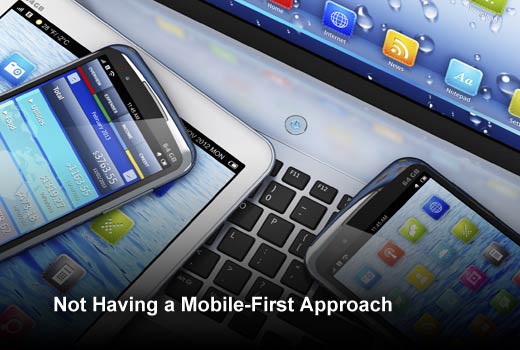Mobility is present in nearly every area of our lives as a form of communication, entertainment and information. Forward-thinking companies are building on this trend through BYOD development and mobility-focused business models with the goal of driving growth, streamlining processes and increasing profits. According to Gartner, 85 percent of businesses indicated they are already using mobile field service applications or plan to use them within 24 months. This has introduced the advent of field or enterprise management apps and tools to further maximize the efficiency of the workforce. But once the decision is made to adopt a BYOD or enterprise mobility plan, what’s next?
The best IT solutions are end-user centric – they take into account that without a happy end user, maximum ROI for mobility projects will not be achieved. For some businesses and IT departments, the process of integrating effective, user-friendly mobile programs and applications has created multiple roadblocks and headaches.
Retriever Communications has identified five enterprise IT mobility barriers that prohibit end users from achieving the maximum potential of a mobility plan:

Enterprise Mobility Roadblocks
Click through for five enterprise IT mobility barriers that prohibit end users from achieving the maximum potential of a mobility plan, as identified by Retriever Communications.

Impractical Application Processes
When adopting a mobility plan, an application or solution can lack the proper functionality to become effective for the end user. For example, when field technicians work through multiple tasks during a project, an application without a simple and efficient system for performing and recording each of these tasks will impact productivity. If your staff does not have confidence in an app’s ability to perform jobs correctly at the point of activity, there will be high resistance to changing from old ways.
Solution: When beginning a mobility program, develop or adopt a mobile platform that reflects your current work processes to ensure end-user adoption. Think about the common daily activities your staff or field technicians encounter and develop or adopt a platform that records, assists or streamlines every step of the process.

Lack of Solution Reliability and Robustness
When working remotely from the office or in the field, it is crucial for a mobile platform to be fully functional regardless of mobile coverage. Losing coverage during an essential portion of the job process can create costly delays. HTML5 is great for some things but is not the universal answer to wireless apps, especially in industrial field service environments where coverage isn’t guaranteed.
Solution: Develop or adopt native applications that ensure your field techs will benefit from having a fully functional app, regardless of coverage, all day. This will create peace of mind for the management team and eliminate potential productivity losses for staff.

Insufficient Local Support
A lack of high-quality, local support help desks can create an issue for end users if problems arise during a field project or assignment. Since no technology or application is perfect all the time, technical issues can cause major project delays and inefficiencies.
Solution: Incorporate or select a mobility vendor that can provide an easy-to-reach, responsive and competent support staff to provide field technicians with back-up options during technical issues. A support team builds confidence since employees and managers can depend on work getting done even if anything goes wrong. A support team who can remotely restore a device to the last point of contact if a device is, for example, broken or damaged during a job, can provide an invaluable boost to productivity.

Not Having a Mobile-First Approach
Just because an application looks impressive doesn’t mean it’s easy to use. Applications that do not provide an easy-to-navigate interface can frustrate the end user, as well as harm work progress. Impressive application design should never trump functionality.
Solution: When creating or adopting mobility applications, ease of use should remain a priority. For example, an application created for a field technician that consists of large buttons, readable fonts and intuitive navigations would provide greater benefits. Additionally, enterprises need to provide the right device for the right environment. Field technicians working in bright environments might find it hard to use applications on an iPad due to glare issues.

Inadequate Mobility Training
Enterprises that don’t consider training as an essential function risk improper use of their mobility solutions. Proper training is the icing on the cake, ensuring that a mobility program is understandable and runs smoothly. Training gives end users, management and IT an opportunity to discuss and learn essential policies and provides an understanding of roles prior to implementation.
Solution: A few hours of training is the minimum needed to ensure a mobility investment has the best chance of succeeding in the field. A good training program defines what the mobility program means to the organization and provides clear data ownership and security policies.














